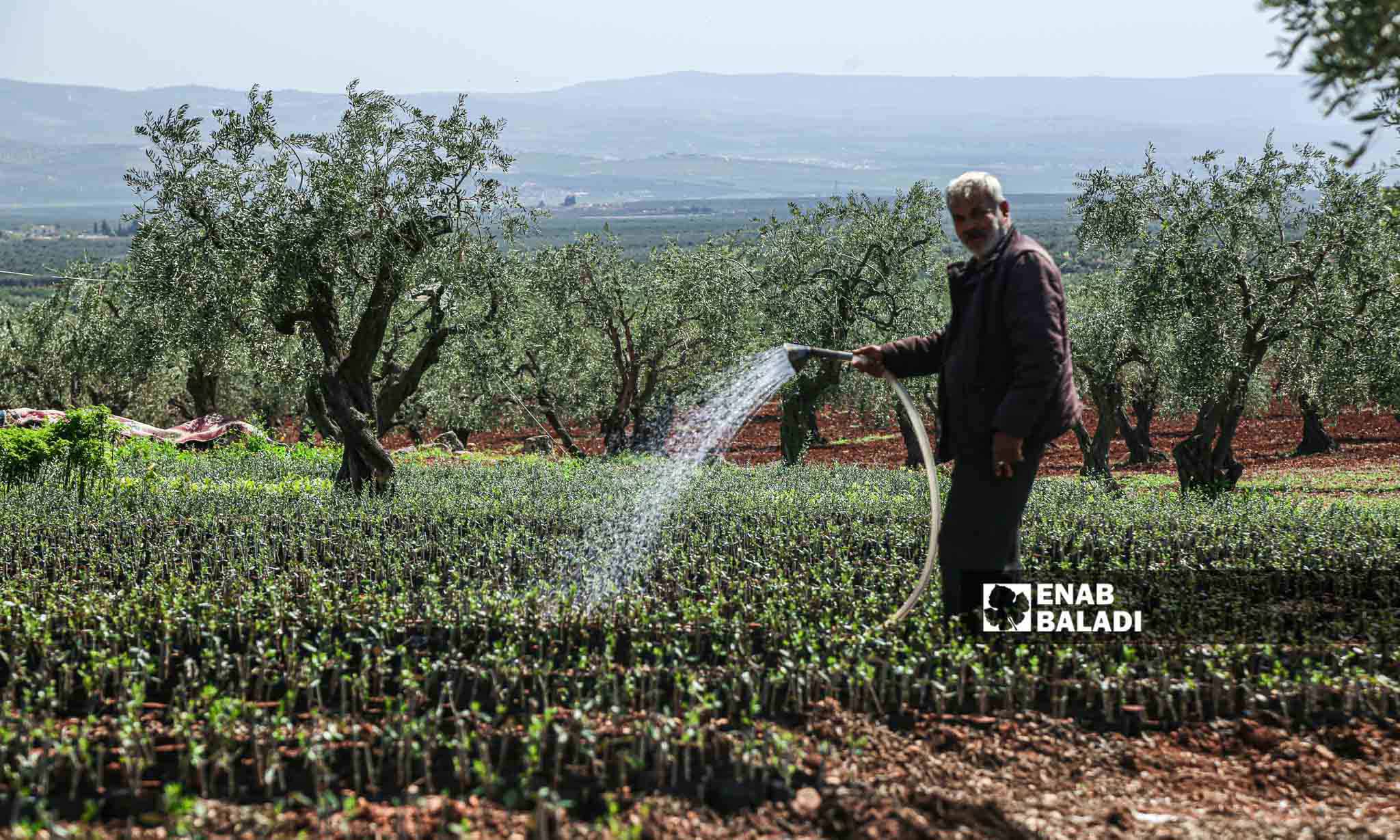



The increase in the costs of caring for olive trees and the weak financial return has led the farmer Hassan Bahloul, who resides in the city of Idlib in northwest Syria, to utilize the vacant land between olive trees by planting peas in them. However, this led to significant financial losses for him due to his incomplete knowledge of the harms of intercropping.
Cultivating crops between trees is an agricultural method that farmers in northwest Syria are not accustomed to. However, the decrease in olive crop productivity and the rising costs of their care have encouraged farmers to change the prevailing agricultural concepts about the harms of these plantings.
Attempts to utilize agricultural spaces between the trees without experience or knowledge, and the return to seeking consultations from experts such as agricultural engineers, have resulted in losses for farmers and entrenched the pattern of monoculture farming.
The farmer, Hassan Bahloul (51 years old), owns land near the city of Idlib planted with olive trees, covering an area of ten dunams. He tried planting peas between the olive trees, which led to significant damage to the olive trees and a decrease in production by 60%, according to his statement to Enab Baladi.
The farmer added that he is aware of the risks of planting other crops between the trees. However, the high costs of caring for the olive trees and the weak financial return pushed him to try planting peas between the olive trees, and the results were “disastrous.” The production declined for three consecutive seasons until the damages caused by the planting of peas between the trees were resolved.
Intercropping is an agricultural method that is carried out by planting two different crops at the same time at a very close distance, with the aim of benefiting from the agricultural spaces and from the diversity to combat agricultural pests and achieve synergy between the two crops.
Intercropping must be done wisely and with knowledge regarding the characteristics of the plants and agricultural pests so that the biological characteristics of one of the plants do not damage the other plant.
The agricultural engineer Yasser Aljark told Enab Baladi that intercropping, or what is known as relay cropping, is capable of increasing the arable land and achieving self-sufficiency in the region, as well as improving the financial return for the farmer.
The engineer believes that the main obstacle to the success of intercropping lies in the lack of trust and communication between the agricultural engineer, who studies the matter scientifically, and the farmer, who tries to rely on himself, which can harm the farming in case of choosing non-compatible crops.
The Director-General of Agriculture in Idlib, Engineer Tamam al-Hamoud, said to Enab Baladi that intercropping is mainly spread in the Harem region, where some vegetables such as zucchini, cucumber, and eggplant are planted between olive trees to increase income and economic return. This is particularly the case with early vegetables like zucchini and cucumber, to exploit the warmth of the region leading to early production compared to other areas.
Early agricultural crops from intercropping cover the market shortage and reduce imports, leading to lower prices, benefiting citizens, and providing a good return to the farmer, according to al-Hamoud.
Al-Hamoud pointed out that there is no possibility of intercropping vegetables in rainfed lands because most vegetables are summer crops and require regular irrigation. However, leguminous crops like fava beans and peas and aromatic crops like cumin can be intercropped with rainfed crops such as olive trees, provided supplementary irrigation is given to the trees after the harvest of the crop and during the summer months to compensate for the damage resulting from intercropping.
Regarding the harms of this agriculture, the engineer mentioned that one of the main concerns of agricultural technicians is the potential for intercropping to cause a serious fungal disease that is common between olives and some vegetables like eggplant, tomato, pepper, and potato, and other members of the nightshade family. This is the Verticillium wilt caused by Verticillium fungi, which can be transmitted to trees through a root injury and can lead to disease symptoms and deterioration in the affected tree with considerable difficulty in treatment.
The Director of Agriculture considered that some farmers’ avoidance of intercropping is due to the lack of irrigation water, as most of the treed lands are rainfed. Another reason is the reluctance to stress trees like olives, in addition to some farmers’ conviction of the incorrectness of this agricultural practice.
Al-Hamoud noted that solving the irrigation problem relies on governmental projects utilizing water from the Orontes River or the springs of Harem and others, which does not affect the groundwater. On the other hand, reliance on groundwater for irrigation requires comprehensive studies.
if you think the article contain wrong information or you have additional details Send Correction